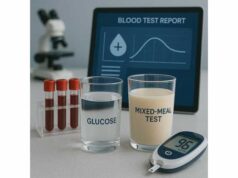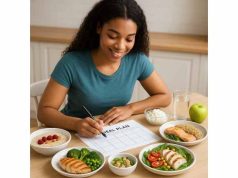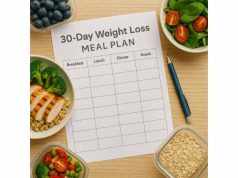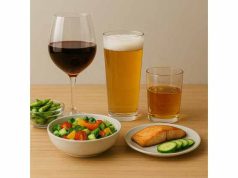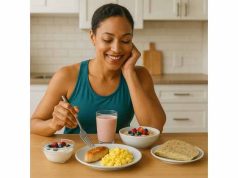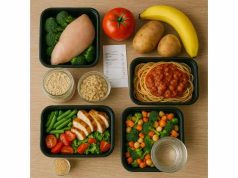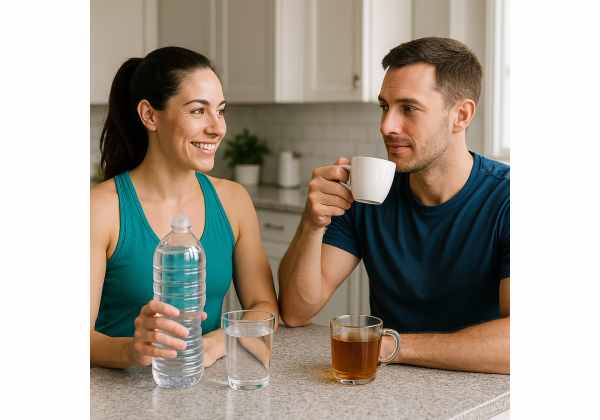
Staying hydrated sounds simple, yet it shapes appetite, energy, and daily food choices—the big levers behind fat loss. Water, coffee, and tea can lower liquid calories, steady hunger, and add a small metabolic lift when you use them deliberately. This guide shows you exactly how to put these drinks to work: how much to drink, when to sip, and what to avoid so beverages support, not sabotage, your deficit. For context on setting targets for energy intake and macronutrients, see our concise guide to calorie and macro basics—then use the strategies below to make hydration a quiet advantage every day.
Table of Contents
- Do water, coffee and tea help weight loss?
- How much water per day for fat loss?
- How to use coffee for weight loss
- Tea types, benefits and dosage
- Best times to drink for appetite control
- Drink mistakes that stall fat loss
- Safety limits and who should avoid
- Frequently Asked Questions
Do water, coffee and tea help weight loss?
If weight loss comes down to a sustained calorie deficit, beverages matter more than most people think. Liquid calories slide under the radar because they don’t fill you up like solid food, yet they add up quickly. Replacing a single 12-ounce soda with water or unsweetened tea trims roughly 140 calories and about 35 grams of added sugar per day. Over weeks, that single swap can make a visible difference.
Water supports weight loss in three practical ways:
- Pre-meal satiety: Drinking about 400–600 ml (14–20 oz) 10–30 minutes before meals often reduces how much you eat at that meal. It occupies stomach volume and gives fullness signals time to register.
- Decision support: People frequently misread thirst as hunger. A glass of water can settle “background hunger” and make it easier to stick to your planned portion.
- Performance and NEAT: Even mild dehydration (≈1–2% body weight) can reduce energy, mood, and spontaneous movement (NEAT). Better hydration helps you feel like walking the extra block or standing after lunch—small behaviors that add up.
Coffee and tea add a modest metabolic nudge for some people. Caffeine can raise energy expenditure for a few hours and may blunt perceived effort during exercise, helping you sustain intensity. Tea brings catechins (especially in green tea) that may provide a small, additive effect with caffeine. These effects are modest—think supportive, not transformative. The real win is what you don’t drink when you choose unsweetened coffee or tea: blended coffee drinks, juices, and sweet sodas.
The bottom line: water, coffee, and tea are effective “support acts” for a structured weight-loss plan. They reduce liquid calories, tame appetite at key moments, and can make adherence easier. Pair them with a realistic calorie target, adequate protein, and consistent meals—see our step-by-step safe weight loss plan—and you’ll give yourself a durable advantage.
How much water per day for fat loss?
There isn’t one perfect number for everyone. Body size, climate, activity, and sodium intake all shift your needs. Use these guardrails, then adjust by thirst and urine color (pale straw is the simple target).
Daily baseline
- General range: ~30–35 ml per kg body weight per day (about 2–3 liters for many adults). This includes plain water plus unsweetened coffee and tea.
- Active days or hot weather: Add 500–1,000 ml (17–34 oz) for each hour of sweaty activity. If you’re a salty sweater (white streaks on clothes), include electrolytes during long or intense sessions.
Pre-meal “preload”
- Drink 400–600 ml (14–20 oz) of water 10–30 minutes before meals. This strategy reliably reduces meal-time intake for many people and is simple to implement. Start with lunch and dinner for one week and track appetite and portions.
Hydrating foods count
- Water-rich foods—soups, yogurt, fruit, vegetables—boost hydration and fullness without many calories. Building meals around these foods is a quiet way to “drink less and chew more,” which supports satiety. For example, add a broth-based starter or a high-water salad. See ideas for water-rich, high-volume meals in water-rich foods.
Simple schedule to try
- Morning: 400–500 ml on waking.
- Late morning: 300–400 ml.
- Pre-lunch: 400–600 ml.
- Mid-afternoon: 300–400 ml.
- Pre-dinner: 400–600 ml.
- Evening: small sips based on thirst (avoid large volumes close to bedtime).
Watch-outs
- Overhydration is rare but possible—don’t force water far beyond thirst for long periods, especially with heavy sweating and no electrolytes.
- Nighttime waking from excessive evening fluids can reduce sleep quality; taper your intake after dinner.
Hydration should feel natural, not forced. If you’re hitting the ranges above, urinating every 2–4 hours, and feeling steady energy, you’re in the right zone.
How to use coffee for weight loss
Coffee can be a helpful tool when you control calories in the cup and time it to your needs. Caffeine’s alertness and small thermogenic effect can make a calorie deficit more comfortable, but only if your coffee stays lean.
How much?
Most people do well with 1–3 cups of brewed coffee per day (roughly 90–300 mg caffeine), with a daily upper limit of about 400 mg for healthy adults. Sensitivity varies; if you feel jittery or sleep poorly, cut back.
Keep it low-calorie
- Best picks: Filter coffee, Americano, cold brew, or espresso with a splash of milk. These drinks run 0–30 calories before add-ins.
- Milk and cream: 30 ml (2 tbsp) half-and-half adds ~40 calories; 30 ml of whole milk adds ~18 calories. Measure instead of eyeballing.
- Sweeteners: One teaspoon of sugar adds 16 calories; flavored syrups can add 50–100 calories per pump. If you like sweetness, keep it minimal or consider non-nutritive options.
Timing that helps
- Late-morning cup: curbs midday appetite without risking sleep.
- Pre-workout: 60 minutes before training can improve performance and perceived effort.
- Avoid late caffeine: most people should cut off 6–8 hours before bedtime.
Smart “coffee patterns”
- Protein coffee: add ½ scoop (10–15 g) of unflavored or vanilla whey to iced coffee for a satiating 60–80-calorie snack.
- Cappuccino plus fruit: a 120–150-calorie pairing that tides you over without raiding the office snacks.
What not to do
- Daily dessert-style drinks (frappes, large lattes with syrup, whipped cream) can add 300–500 calories—more than a meal. Reserve them for occasional treats and downsize the cup.
Coffee works best as part of a balanced plan with adequate protein and fiber. If you’re adjusting meals too, review how to align beverages with your protein-carb-fat targets in macro balance.
Tea types, benefits and dosage
Tea is a versatile, nearly zero-calorie way to hydrate with potential metabolic perks—mainly from caffeine and catechins.
Green tea (and matcha)
Rich in EGCG catechins; may slightly increase daily calorie burn when combined with caffeine. Many people enjoy 2–4 cups per day, or 1–2 servings of matcha. Brew 2–3 minutes in ~80°C/175°F water to avoid bitterness.
Black and oolong tea
Contain caffeine and theaflavins; some evidence suggests small increases in energy expenditure and fat oxidation. Brew 3–4 minutes in hot (not boiling) water.
Herbal tea
Caffeine-free options (peppermint, rooibos, hibiscus, ginger, chamomile) are excellent in the evening when you want flavor without stimulating effects. They support hydration and help replace dessert-like beverages after dinner.
Practical guidance
- Dose for benefits: a realistic intake is 2–4 cups/day of green or black tea. Expect subtle effects; the main advantage is replacing sugary drinks and adding ritual without calories.
- Add-ins: Lemon, mint, cinnamon sticks, or a splash of milk for black tea add flavor with minimal calories. Keep honey or sugar to 1–2 teaspoons if used at all.
- Sweeteners: If you prefer a sweet taste while dieting, see the evidence summary on sweeteners and weight loss to choose an approach that fits your preferences.
Cautions
- Tea can reduce non-heme iron absorption if taken with meals; if you’re iron-deficient, drink tea between meals.
- Concentrated green tea extracts have been linked—rarely—to liver issues; stick to brewed tea unless advised by a clinician.
Tea’s real superpower is behavioral: it gives you a satisfying, low-calorie ritual at times when snacking tends to creep in.
Best times to drink for appetite control
Strategic timing can keep appetite steady, reduce impulsive snacking, and help you land a consistent deficit without white-knuckle willpower.
1) On waking
A 400–500 ml glass jump-starts hydration after overnight fluid loss and can blunt early hunger that’s really thirst.
2) 10–30 minutes before meals
This is the most reliable window for appetite control. Water or tea before lunch and dinner is a simple, repeatable habit that trims portions without counting.
3) Late morning and mid-afternoon “sag”
A cup of coffee or tea here can stabilize energy and make it easier to push to your planned meal. Pair with protein or fruit if you need a bridge snack.
4) Pre-workout
Arrive hydrated: 300–500 ml water 60–90 minutes before training; consider a caffeinated coffee or tea if you tolerate it. During long or hot sessions, sip fluids and include electrolytes.
5) Evening routine
Swap dessert-like drinks for herbal tea. A mint, rooibos, or ginger blend after dinner offers warmth and flavor without calories and can signal “kitchen’s closed.”
6) During time-restricted eating
If you use a fasting schedule, water, black coffee, and plain tea can reduce perceived hunger during the fasting window. For guidance on structuring an 16/8 or 14/10 pattern, see time-restricted eating.
Micro-habit tip: Set two “anchor sips” you never miss—on waking and before lunch. These two alone often improve energy and portion control.
Drink mistakes that stall fat loss
Even motivated eaters lose ground with hidden liquid calories or timing missteps. Audit these common pitfalls and use the fixes.
1) Dessert-style coffee as a routine
Large sweetened lattes, blended drinks, and flavored mochas can run 300–500 calories. Fix: Downsize, skip whipped cream, ask for half-sweet, or pivot to an Americano with a splash of milk.
2) “Healthy” juices and smoothies
Fruit juice concentrates a lot of sugar without fiber; store-bought smoothies often hide syrups and sherbets. Fix: Eat fruit whole, or blend your own with measured ingredients and added protein.
3) Mindless evening drinking
Alcohol adds calories and weakens food restraint. Fix: Alternate with sparkling water or herbal tea and set a clear drink budget. For a deeper rundown, see alcohol and fat loss.
4) Overhydrating close to bedtime
Chugging water late can disrupt sleep and worsen appetite control the next day. Fix: Front-load fluids earlier and taper after dinner.
5) Relying on “detox” or laxative teas
These don’t melt fat; some contain stimulants or senna that cause cramps and false scale losses from water. Fix: Choose plain herbal blends and focus on consistent meals.
6) Too much caffeine
Jitters, anxiety, and poor sleep sabotage adherence. Fix: Cap caffeine at a level you tolerate (often ≤300–400 mg/day) and cut off 6–8 hours before bedtime.
Small corrections here protect your deficit and make the plan sustainable.
Safety limits and who should avoid
Hydration strategies should be safe, comfortable, and tailored to your medical context. Use these guardrails and speak with your clinician if you have conditions below.
Caffeine limits
- Healthy adults: up to 400 mg/day (≈4 small cups of coffee or 6–8 cups of black tea).
- Pregnant or breastfeeding: aim for ≤200 mg/day unless advised otherwise.
- Cutoff time: 6–8 hours before bedtime to protect sleep.
Who should be cautious with caffeine
- People with anxiety, insomnia, uncontrolled hypertension, arrhythmias, or GERD (coffee can worsen reflux).
- Those on medications that interact with caffeine or catechins (some psychiatric meds, anticoagulants)—ask your pharmacist or clinician.
Tea-specific notes
- Iron deficiency: Tea reduces non-heme iron absorption; drink between meals and combine iron-rich foods with vitamin C.
- Kidney stones: Very high black tea intakes add oxalate load; moderate total tea if you’re prone to oxalate stones.
- Green tea extracts: Avoid concentrated supplements unless prescribed due to rare liver issues.
Water and electrolytes
- Overhydration/hyponatremia risk rises with excessive water + heavy sweating + no electrolytes. During long, hot workouts, use an electrolyte beverage and drink to thirst.
- Kidney, liver, or heart disease: Fluid and sodium may need medical supervision.
General rule: If a drink pattern causes palpitations, dizziness, GI distress, or worsened sleep, scale back. Comfort, sleep, and adherence are the priorities that lead to long-term fat loss.
Frequently Asked Questions
How much water should I drink to lose weight?
Aim for ~30–35 ml/kg per day (about 2–3 liters for many adults), adjusting for climate and activity. Add 400–600 ml 10–30 minutes before meals to improve fullness. Use thirst and pale-straw urine as simple checks that you’re in a good range.
Is coffee or tea better for fat loss?
Neither is “best.” Both are nearly zero-calorie when unsweetened. Coffee delivers more caffeine per cup; green and black tea add catechins that may provide a small bonus. Choose the one you enjoy and can keep lean—consistency matters more than small metabolic differences.
When should I drink water for appetite control?
The most reliable window is 10–30 minutes before meals. Also sip on waking and mid-afternoon to steady energy and reduce snack impulses. Taper intake after dinner to protect sleep; frequent overnight bathroom trips undermine next-day appetite control.
Do lemon water or detox teas burn fat?
No drink “melts” fat. Lemon water is a pleasant, low-calorie way to hydrate; “detox” teas often contain stimulants or laxatives that cause temporary water loss, not fat loss. Sustainable weight loss comes from a calorie deficit supported by smart hydration and balanced meals.
How many cups of green tea per day help?
A practical target is 2–4 cups per day of brewed green tea or 1–2 servings of matcha. Expect subtle effects—mainly a small metabolic nudge and a helpful, low-calorie ritual. Avoid high-dose extracts unless advised by a clinician due to rare liver risks.
Can I use artificial sweeteners in coffee and tea while losing weight?
Non-nutritive sweeteners can reduce drink calories and may help with adherence. Some people prefer to minimize sweetness over time. If you use them, keep amounts modest and focus on the bigger drivers of progress: total calories, protein, fiber, and activity.
References
- Outcomes in Randomized Clinical Trials Testing Changes in Daily Water Intake: A Systematic Review 2024 (Systematic Review)
- Scientific Opinion on Dietary Reference Values for water 2010 (Guideline)
- Scientific Opinion on the safety of caffeine 2015 (Guideline)
- The effects of green tea extract supplementation on body composition, obesity-related hormones and oxidative stress markers: a grade-assessed systematic review and dose-response meta-analysis of randomised controlled trials 2024 (Systematic Review & Meta-analysis)
- Green Tea – LiverTox 2020 (Safety Review)
Disclaimer
The information in this article is educational and is not a substitute for professional medical advice, diagnosis, or treatment. Always consult your physician or a qualified healthcare provider about your individual health, medications, and nutrition needs before making significant changes.
Share and follow
If this guide helped you, consider sharing it with a friend who’s working on their health goals. For more practical nutrition and weight-loss content, follow us on Facebook, X, or whichever network you use most.

